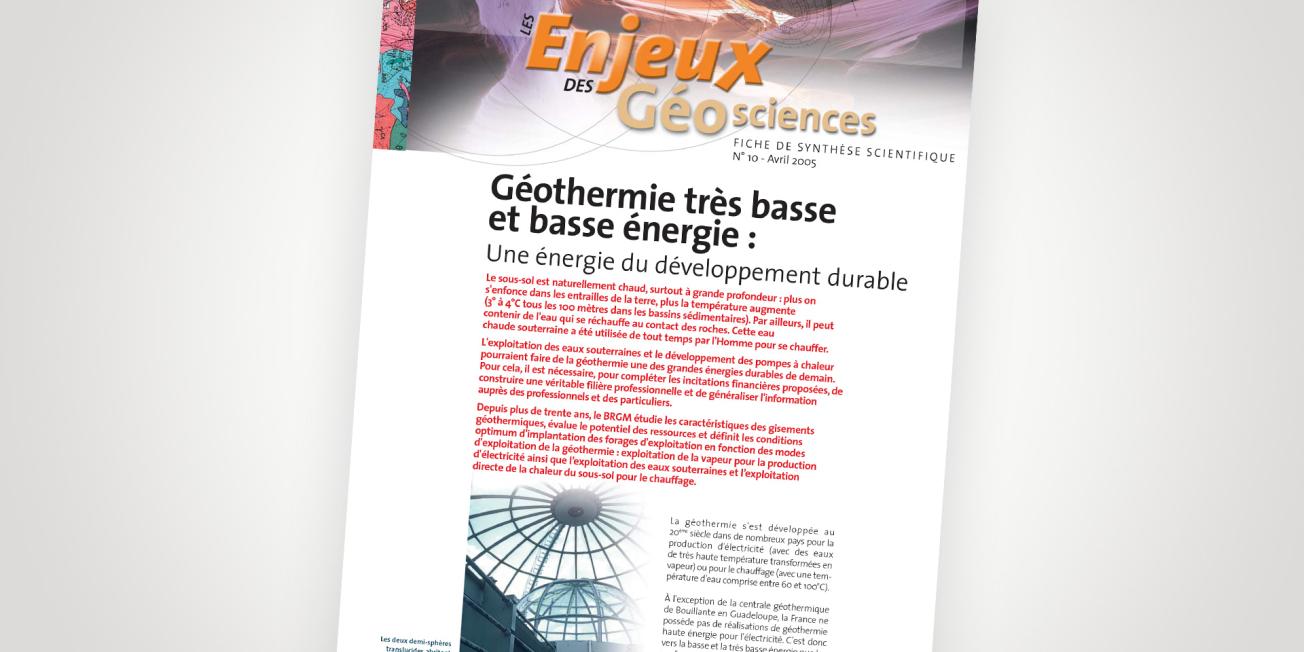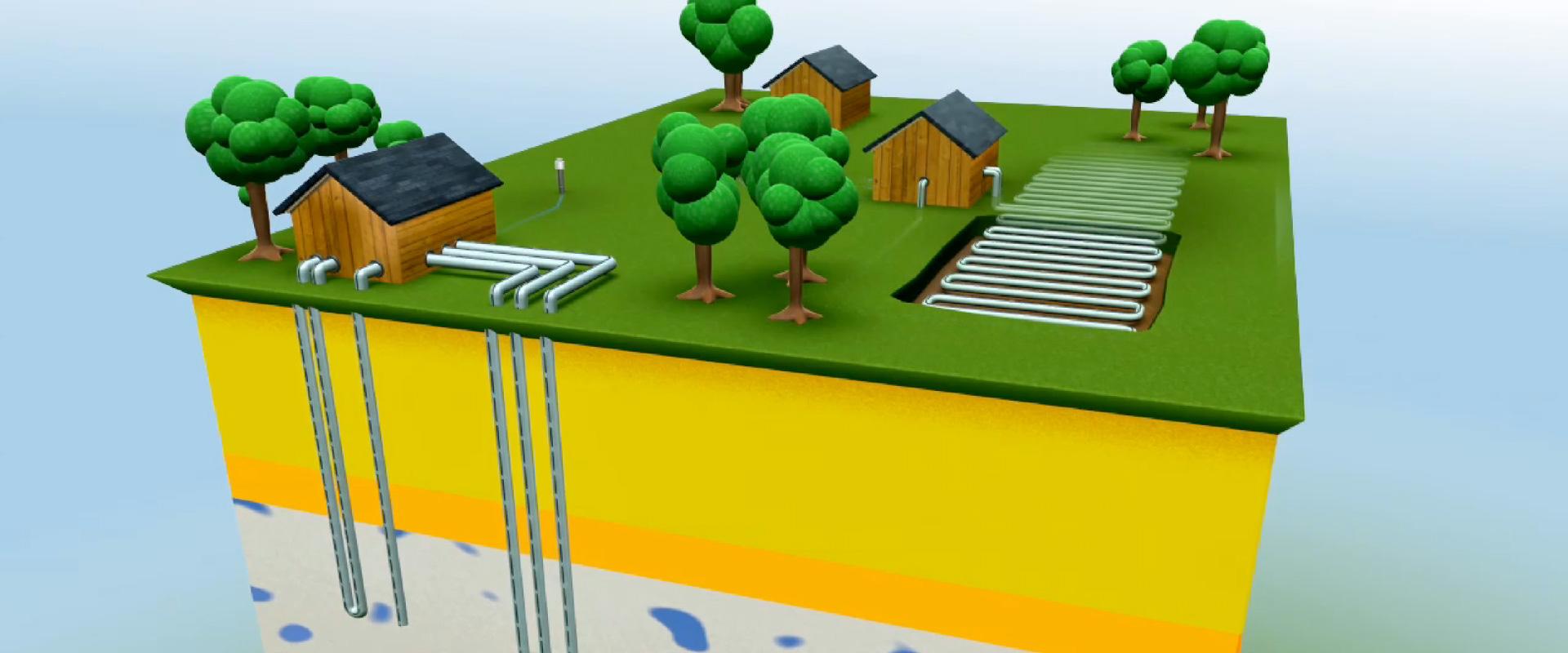
Cover of the thematic file.
© BRGM
Energy for sustainable development
Geothermal energy was developed in many countries in the 20th century for the production of electricity (with very high temperature water transformed into steam) or for heating (with a water temperature between 60 and 100°C).
With the exception of the Bouillante geothermal power plant in Guadeloupe, France does not have any high-energy geothermal projects for generating electricity. French professionals have thus turned towards low-enthalpy and very low-enthalpy energy production. Today, geothermal energy contributes 0.44% to the French "energy mix".
The awareness of climate change validated by the Kyoto Protocol must lead to an increased use of renewable energy sources. Among these, geothermal energy receives less media coverage than solar, wind or biomass, even though it offers undeniable advantages in terms of energy efficiency, reliability and environmental protection. In addition, its energy production and availability throughout the year is higher than that of solar and wind power. But above all, geothermal energy is a clean energy: in 20 years, geothermal installations in Ile-de-France have avoided 8 million tonnes of CO2 being emitted into the atmosphere.
The BRGM group, in association with other partners such as ADEME and EDF, wants to put geothermal energy at the forefront of the energies of the future with practical projects to revive its use in the Ile-de-France region, in particular.







